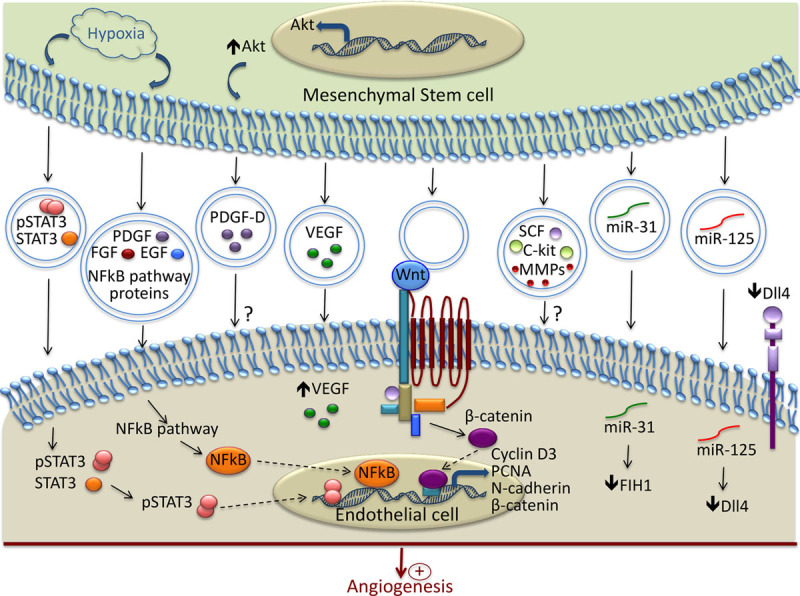Figure 2.

Mechanisms involved in the modulation of Angiogenesis by MSC-derived extracellular vesicles (EVs). In response to hypoxia, mesenchymal stem/stromal cells release EVs containing active pSTAT3 and nuclear factor (NF)-κB pathway–associated proteins, which are transferred to recipient endothelial cell (EC) and promote the transcription of proangiogenic proteins. EVs contain and transfer several growth factors to EC (PDGF, FGF, EGF, VEGF, SCF, and c-kit). Wnt is present in the EVs and through interaction with its receptor, promotes the transcription of several molecules involved in angiogenesis. EVs stimulate vessel formation through the transfer of various micro-RNA. Among them, miR-31 acts by suppressing the factor inhibiting HIF-1α, and miR-125 promotes tip cell specification by suppressing Delta-like 4 (Dll4). ? indicates that the exact mechanisms of their transfer and the underlying signaling pathways are not completely described; EGF, epidermal growth factor; FGF, fibroblast growth factor; FIH, factor inhibiting HIF-1α; HIF, hypoxia inducible factor; PCNA, proliferating cell nuclear antigen; PDGF, platelet-derived growth factor; SCF, stem cell factor; and VEGF, vascular endothelial growth factor.
